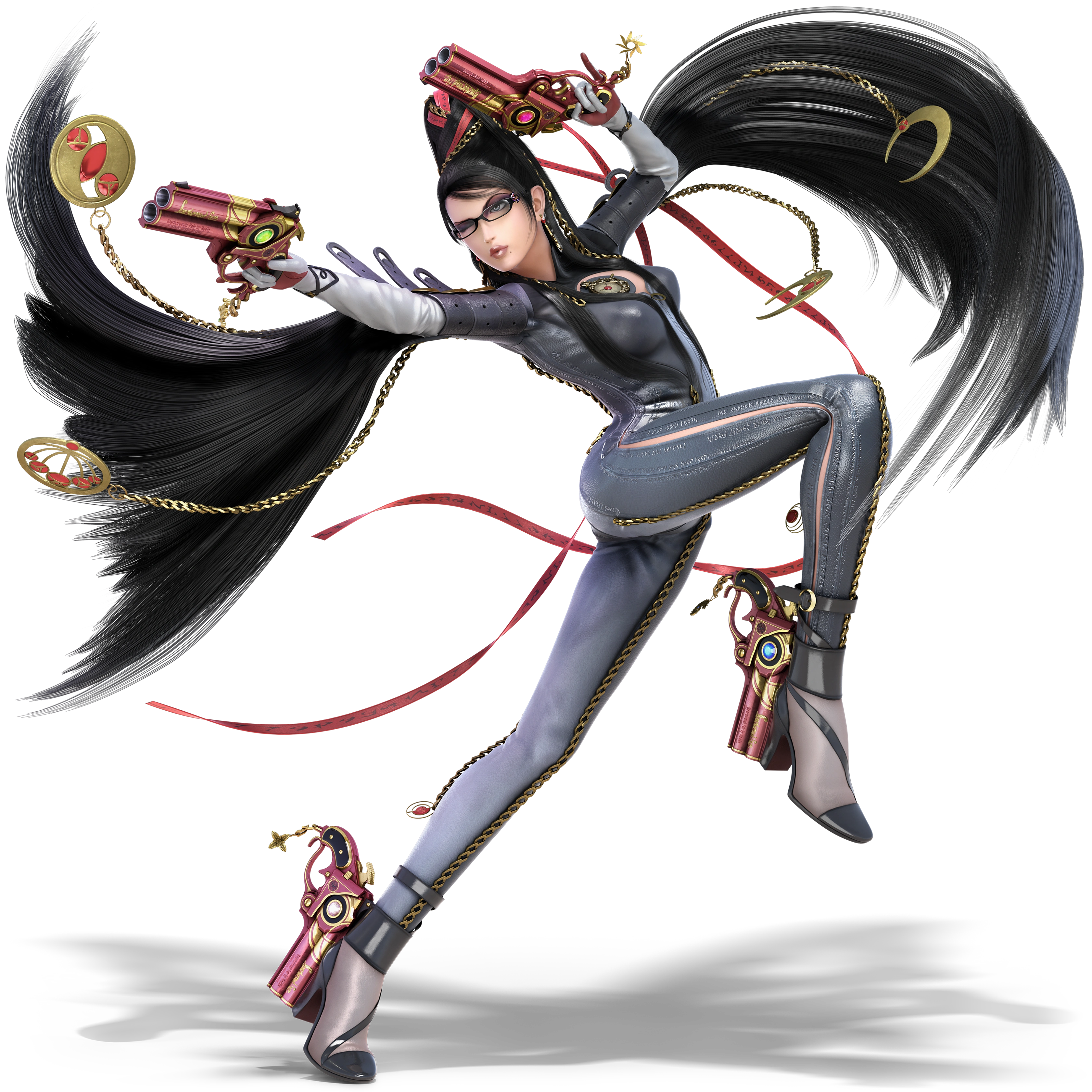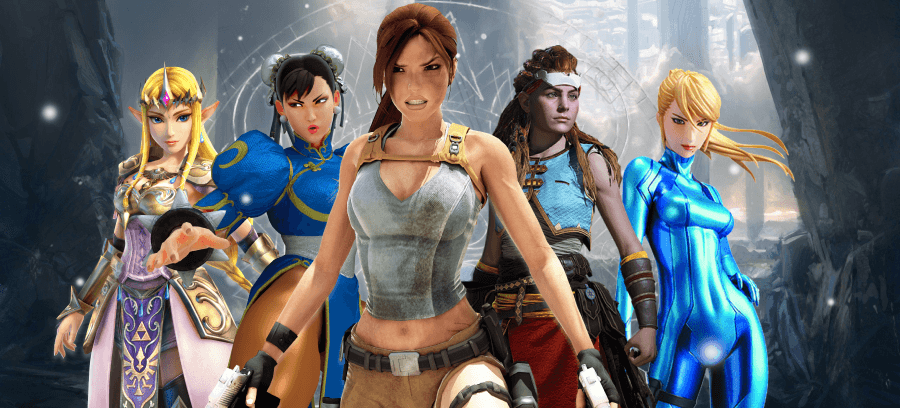The male gaze is a feminist theory that argues movies and video games are structured around the male gaze, meaning that it is made for a male audience and reinforces traditional gender roles. Film theorist Laura Mulvey believes that this gaze objectifies women and reduces them to passive objects of male desire. In Mulvey’s essay “Visual Pleasure and Narrative Cinema” (1975), she developed the feminist theory reinforced by the narrative structure in media. Which portrays the male as empowering while sexualising women in the media. Giving women does not add a sense of narrative to the media piece, as women are there for male desire. Mulvey’s ideas can be highlighted in the Bayonetta video games with this idea of the media hyper-sexualising women in a way to objectify them in the media. In this blog, we will focus on the one and only two Umbra witches, Bayonetta, who are objectified as women in her video game, Bayonetta.

In the Bayonetta franchise, she is often cited as an example of the male gaze and objectification in video games due to her hyper-sexualized character design, provocative movements, and the way the camera angles linger on her body. The game’s protagonist, Bayonetta, is portrayed as confident and assertive while using visual rhetoric to convey women’s sexuality. Bayonetta takes complete control of her sexiness and unashamedly shows it off. She is a dominatrix, sexy yet intimidating and powerful. She poses erotically as she performs killing blows on her enemies. She summons demons fully naked in the most weirdly sexy stances in the game. Her confident, exaggerated walk and playful interactions with enemies are framed in ways that highlight her sexuality rather than her power or strategy. Many scenes place Bayonetta in sensual or suggestive contexts, such as luxurious, gothic settings that evoke a fantasy of seduction and mystery
In the official launch trailer video above, the Mise-en-scene is heavenly used in Bayonetta to sexualise women by emphasizing visual elements such as costume design, camera work, body language and setting to highlight the protagonist’s sexuality. Bayonetta’s outfit is a skin-tight catsuit made of magical hair, emphasising her body shape. Accessories like high heels with attached funds and exaggerated makeup amplify her ‘femme fatale’ image, drawing attention to traditionally sexualised traits. Using slow zooms and close-ups on her body parts frame her as an object of desire aligning with the male gaze, while cutscenes and gameplay frequently use low-angle shots that linger on Bayonetta’s chest, hips and legs. It uses a colour palette of black, red and metallics to evoke a seductive, dangerous allure, enhancing her hyper-feminine image.
Overall, the concept of the male gaze by Laura Mulvey has profoundly shaped gaming culture, particularly in the representation of women in video games, with Bayonetta as an example of being depicted as a passive object of male desire. This perspective aligns closely with the portrayal of female characters in many games. Characters like Bayonetta illustrate how games prioritize visual appeal and sexualization over meaningful, multifaceted representation.
References:
(Opinion: Being sexy and not sexist, a look at Bayonetta and objectification, Katherine Cross, July 11, 2016)
https://www.gamedeveloper.com/design/opinion-look-at-i-bayonetta-and-objectification
(Bayonetta: Female Sexuality and Agency in Video Games, Laila Carter, April 27, 2016)
https://withaterriblefate.com/2016/04/27/bayonetta-female-sexuality-and-agency-in-video-games/
(Laura Mulvey: Visual Pleasure and Narrative Cinema, 1975)
https://www.amherst.edu/system/files/media/1021/Laura%20Mulvey%2C%20Visual%20Pleasure.pdf
(Female video game characters and the male gaze, Joseph Michael Hoffswell, 2011)
https://www.proquest.com/docview/873898219?pq origsite=primo&sourcetype=Dissertations%20&%20Theses


Hi, Rihaan!
This is a well-written and insightful blog! YouÔÇÖve done a great job breaking down the concept of the male gaze and linking it to Bayonetta as a prime example in gaming. I really like how you connected Laura MulveyÔÇÖs theory to specific aspects of the game, like BayonettaÔÇÖs hyper-sexualized design, provocative movements, and the intentional use of camera angles. ItÔÇÖs fascinating (and a little frustrating) to see how much gaming culture still leans into these tropes. YouÔÇÖve also captured the tension in her portrayalÔÇöwhile Bayonetta is undeniably confident and powerful, her character is still framed in a way that caters to male desire. The discussion around empowerment versus objectification is really thought-provoking, and itÔÇÖs clear that her character design prioritizes aesthetics over depth.
This analysis of the Male Gaze in gaming culture is both insightful and necessary. You highlighted how female characters in many popular games have often been shaped by male fantasies, turning women into objects of desire or minor roles. Your examples, like Lara Croft and Bayonetta, effectively show how game design has historically focused on the Male Gaze.
I found your points about the Male Gaze affecting not just in-game characters but also the wider gaming community very compelling. Female gamers often face harassment and objectification, which reinforces harmful stereotypes. This issue goes beyond character portrayal; it also reflects how real women are treated in gaming environments.
I also liked your focus on the positive changes in recent years, with games like Horizon Zero Dawn and Celeste presenting stronger female characters. ItÔÇÖs encouraging to see more varied stories and character designs that challenge the old gender norms in the industry.
Clearly, gaming culture is starting to change. While there is still a long way to go, the growing demand for inclusive and non-sexualized representations of women in games is a hopeful sign. As the industry evolves, I hope we move away from the Male Gaze towards a more inclusive viewpoint that honors both the agency of female characters and the experiences of female players.